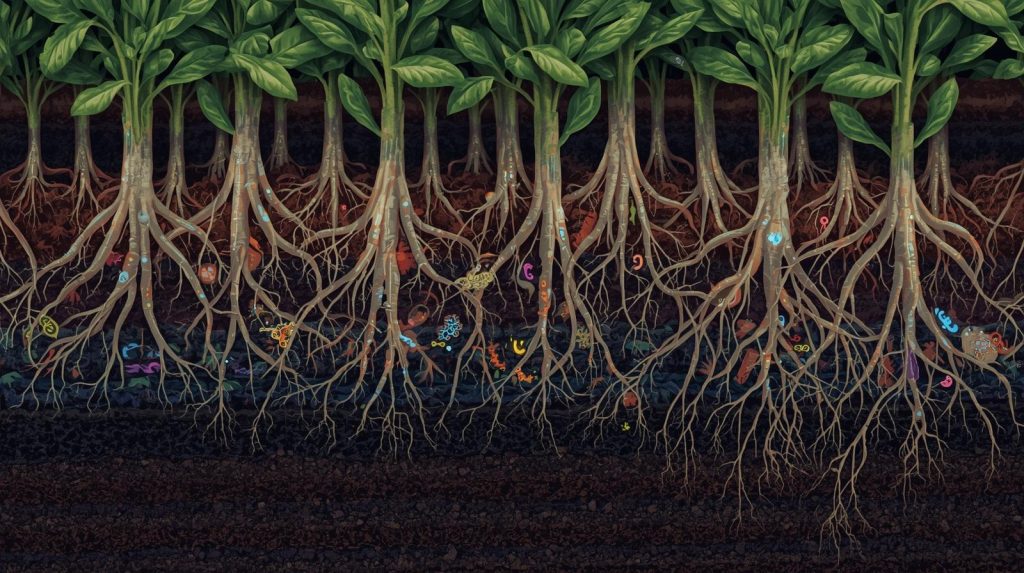Introduction: The Microbial Secret Beneath Our Feet
Beneath every thriving crop lies a hidden network of microscopic life — bacteria, fungi, and archaea that form the soil microbial community.
This new study reveals a surprising twist: the composition of these microbial communities influences crop growth only when nutrients are locked away in complex organic forms, not when easily available fertilizers are present.
This finding reshapes how we think about soil fertility management and highlights why protecting microbial diversity is key to sustainable farming.
The Study: Microbial Diversity Meets Nutrient Availability
Researchers designed experiments to test how different soil microbial communities affect plant performance under two nutrient conditions:
- Available nutrients — easily accessible fertilizers or mineral forms.
- Recalcitrant nutrients — nutrients locked within complex organic matter.
The results were clear:
When nutrients were abundant and easy to access, microbial composition had little effect on plant growth.
But when nutrients were bound in organic matter, microbial diversity determined how effectively crops could grow.
Key Findings
- Microbial Composition Matters Under Stress:
- In nutrient-poor or recalcitrant soils, crops depend on microbial communities to decompose organic matter and release nutrients.
- Different microbial groups specialize in breaking down specific compounds like lignin or cellulose.
- Functional Diversity Over Species Count:
- It’s not just the number of microbial species that matters, but their functional capabilities — their enzymes and metabolic pathways for nutrient mobilization.
- Soil Health and Crop Yield Are Linked:
- Soils with higher microbial functional diversity showed better nutrient availability and plant biomass accumulation.
- Implication for Sustainable Agriculture:
- Managing microbial communities could reduce dependency on chemical fertilizers.
- Organic amendments, cover crops, and reduced tillage foster beneficial microbes that mobilize recalcitrant nutrients naturally.
Why This Matters
Modern agriculture often focuses on adding nutrients through fertilizers — but this study emphasizes unlocking the nutrients already in the soil.
Healthy microbial communities act as biological keys, breaking open complex nutrient sources and feeding crops sustainably.
By maintaining soil biodiversity, farmers can:
- Improve long-term fertility.
- Reduce input costs.
- Enhance resilience against climate stress and degradation.
Practical Implications for Farmers and Researchers
- Use organic residues and compost to feed soil microbes.
- Minimize chemical and physical soil disturbance.
- Promote microbial consortia known for enzyme production.
- Apply bioinoculants tailored to mobilize phosphorus, nitrogen, and carbon.
This microbial-based nutrient mobilization could become a core strategy for regenerative agriculture worldwide.
Conclusion: The Future Lies in Microbial Intelligence
This study reinforces that soil isn’t just dirt — it’s a living ecosystem.
Microbial composition might not always influence crop growth, but when it does, it can make the difference between nutrient limitation and productivity.
In the era of sustainable agriculture, working with microbes rather than replacing them could be the key to unlocking the planet’s recalcitrant nutrient reserves.
Reference
Potter, T. S., Lankau, R. A., Silva, E. M., & Ruark, M. D. (2025). Soil microbial community composition matters for crop growth, but only when mobilizing recalcitrant nutrient sources. Plant and Soil. https://doi.org/10.1007/s11104-025-07864-y







